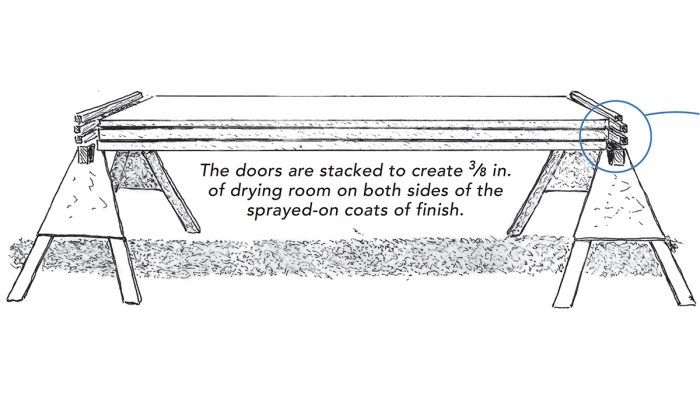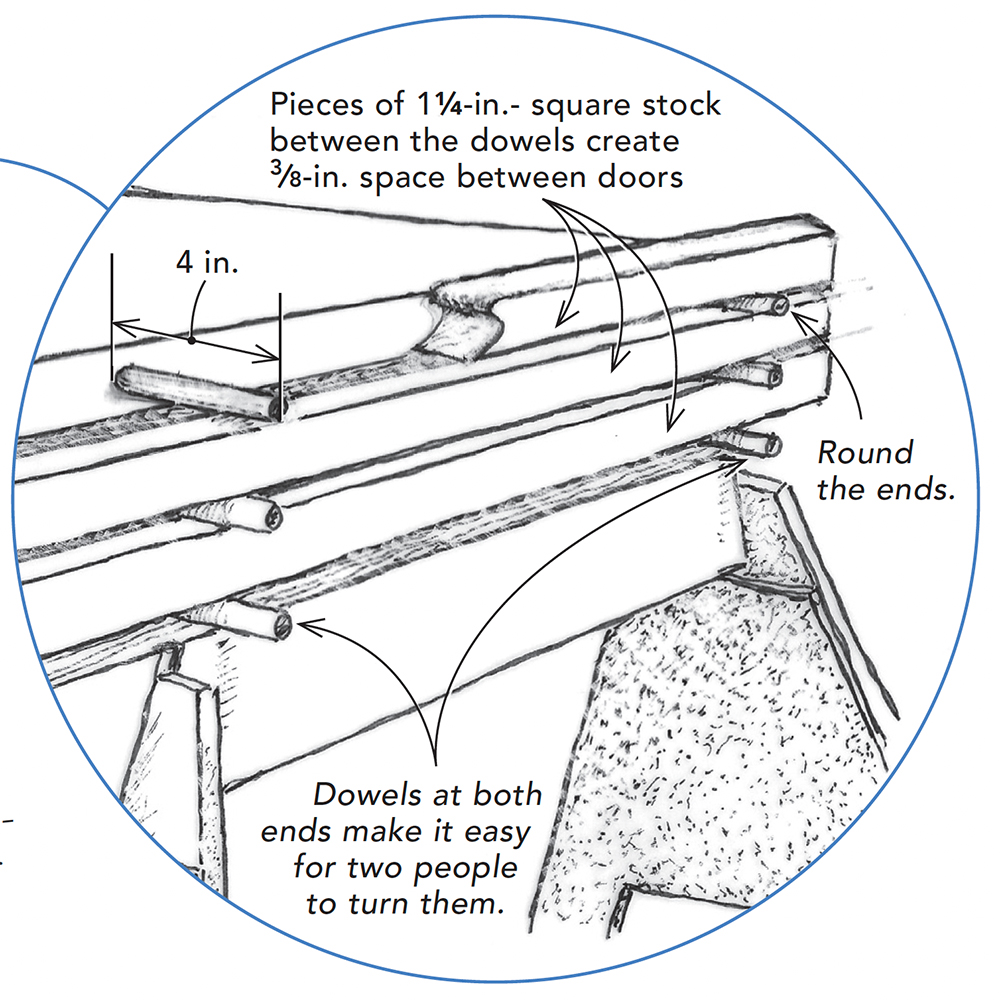Dowels for Painting and Stacking
Attach dowels to interior-door slabs and suspend them on sawhorses to make the painting and drying process easier.

When I have a bunch of heavy interior-door slabs to finish at once, I attach dowels to the top and bottom of the slabs, which makes them easier to paint, move, and stack. The four dowels provide a way to suspend the doors between two sawhorses while painting. The dowels also make it easy for two people to flip the door over immediately after one side is painted, and then move it to the sawhorses that serve as a drying rack.
Once they’re on the drying rack, I place 1-1/4-in.-square stock on top of the dowels to provide a place that the dowels from the next door can rest on. I then set more square stock on top of that door’s dowels to support the dowels on the door above, and so on.
The number of doors you can stack in this manner is only limited by how strong your sawhorses are, how many pieces of stock you have, and how high you and your helper can comfortably lift and place the doors on the stack.
To install the dowels, I use a self-centering doweling jig to drill the two 1/2-in.-diameter holes approximately 3 in. deep in both the top and bottom of the door. Space the holes so that they’re a few inches short of the length of the sawhorses you plan on using. Insert 1/2-in.- diameter dowel rods in all four holes and cut them off so they protrude approximately 4 in. from the door. Once the doors are finished, I trim the dowels off with a fine-tooth backsaw. Using screws instead of dowels can work on hollow-core doors, but for heavy, solid door panels, I’ve found that dowels work best.
— Mark Kellberg; Winnetka, Ill.
From Fine Homebuilding #311
RELATED STORIES
Got a Tip?
Do you have any great tips like this one on how to paint heavy door slabs? Share your methods, tricks, and jigs with other readers. Tag them @FineHomebuilding on social, email them to us at [email protected], or upload them to FineHomebuilding.com/reader-tips. We’ll pay for any we publish.






























